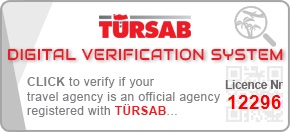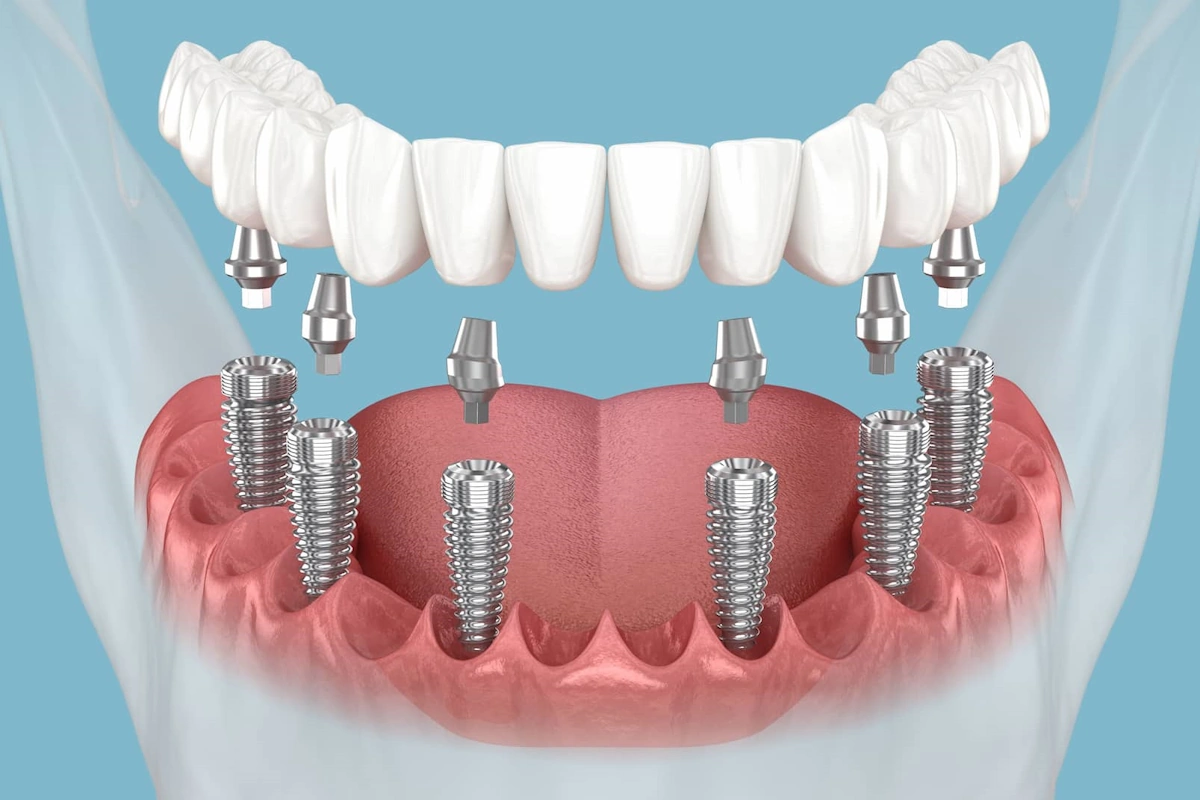Successful All-on-6 implant outcomes depend on diligent post-operative care. Consistent daily oral‑rehab after all‑on‑6 implant placement is crucial for long-term durability and function. This guide offers patients an authoritative approach to essential rehabilitation practices, vital for safeguarding their investment and ensuring a healthy, functional smile. Diligent application of these strategies ensures seamless integration and optimal oral health, leading to lasting confidence.
Table of Contents
Understanding All-on-6 Dental Implants
All-on-6 dental implants represent a cutting-edge solution for full arch restoration, providing a permanent, stable, and aesthetically pleasing alternative to traditional dentures. This innovative technique involves strategically placing six dental implants into the jawbone, which then serve as anchors for a custom-designed full arch bridge. The implants integrate with the bone through a process known as osseointegration, forming a strong and durable foundation. For a deeper understanding of this procedure, you may refer to our comprehensive guide on Full Arch Restoration: All-on-6 Implant in Turkey Benefits.
Immediate Post-Placement Care
Immediately following the All-on-6 implant surgery, the focus shifts to managing initial discomfort, preventing infection, and initiating the healing process. Patients will typically be fitted with a temporary prosthesis on the same day or within a few days, allowing for immediate aesthetic and functional improvement. However, this immediate loading requires careful management to avoid undue stress on the integrating implants.
The Role of Osseointegration
Osseointegration is the biological process by which the dental implants fuse directly with the jawbone. This critical phase typically takes several months. During this period, the implants must remain undisturbed to ensure successful bonding. The stability achieved through osseointegration is what grants All-on-6 implants their remarkable strength and longevity, allowing them to function like natural teeth. Proper implant aftercare during this time is crucial to support this biological process.
The Criticality of Daily Oral-Rehab After All-on-6 Implant Placement
Beyond the surgical expertise, the ultimate triumph of an All-on-6 implant procedure rests heavily on the patient’s commitment to consistent and appropriate daily oral‑rehab after all‑on‑6 implant placement. This isn’t merely about maintaining cleanliness; it’s a comprehensive regimen designed to protect the surgical sites, encourage successful osseointegration, prevent complications, and ensure the long-term health and stability of the entire prosthetic system. Neglecting these protocols can lead to serious issues, including implant failure, infection, and compromised oral health.
Preventing Complications
The mouth is a complex environment prone to bacterial growth. Without diligent oral hygiene, bacterial plaque can accumulate around the implants and their prosthetic components, leading to peri-implantitis – an inflammatory condition that can result in bone loss and, ultimately, implant loss. Effective daily rehabilitation significantly mitigates these risks, preserving the health of the surrounding tissues and the integrity of the implants.
Optimizing Healing and Integration
Proper oral care stimulates healthy blood flow and tissue regeneration, creating an optimal environment for osseointegration. Mechanical disruption from improper cleaning or dietary choices can impede this delicate process. By following prescribed rehabilitation techniques, patients actively contribute to the successful fusion of the implants with their jawbone, solidifying the foundation for their new smile.
Phase 1: Immediate Post-Surgical Rehabilitation (First 1-2 Weeks)
The initial period following All-on-6 implant placement is crucial for establishing a foundation for healing. Strict adherence to professional guidance during this phase is non-negotiable.
Diet Modifications
For the first few weeks, a soft diet is absolutely essential. This means avoiding hard, crunchy, sticky, or chewy foods that could place excessive pressure on the newly placed implants or the temporary prosthesis. Liquids, smoothies, soups, yogurt, mashed potatoes, and soft-cooked vegetables are ideal. The objective is to minimize any mechanical stress that could disrupt the healing surgical sites or compromise the fragile osseointegration process.
Oral Hygiene Practices (Initial Phase)
During the first 24-48 hours, it’s critical to avoid rinsing vigorously or disturbing the surgical sites. After this initial period, gentle oral hygiene begins:
- Saltwater rinses: Gently rinse with warm saltwater (half a teaspoon of salt in a glass of warm water) 2-3 times a day, especially after meals. This helps to keep the area clean and reduce bacteria without harsh chemicals. Avoid swishing aggressively.
- Prescribed mouthwash: Your dental professional may prescribe an antimicrobial mouthwash (e.g., chlorhexidine gluconate). Use it exactly as directed to control bacterial load.
- Soft toothbrush: Use an extra-soft toothbrush to gently clean the exposed surfaces of the temporary prosthesis and any accessible areas of the gums, avoiding the surgical sites directly.
Pain and Swelling Management
Some degree of pain and swelling is normal after surgery. Your dentist will prescribe pain medication and antibiotics. Follow these instructions precisely. Applying cold compresses to the outside of your face in 20-minute intervals during the first 24-48 hours can significantly reduce swelling. Elevating your head while sleeping can also aid in reducing swelling.
Research Spotlight: Early Oral Hygiene and Implant Success
A study published in the *Journal of Oral & Maxillofacial Implants* highlighted the profound impact of stringent early oral hygiene protocols on the success rates of immediately loaded All-on-6 implants. Researchers found that patients who meticulously followed prescribed gentle rinsing and cleaning regimens within the first week post-surgery exhibited significantly lower rates of peri-implant mucositis and early implant failure compared to those with less diligent care. The study underscored that the physical removal of nascent bacterial plaque, even with minimal mechanical force, plays a critical role in preventing inflammation that could jeopardize osseointegration, thereby validating the importance of the initial daily oral‑rehab after all‑on‑6 implant placement protocols.
Phase 2: Transitional Rehabilitation (Weeks 3-8)
As the initial healing progresses, the rehabilitation efforts adapt to support ongoing osseointegration and prepare for the permanent prosthesis.
Gradual Diet Progression
While still adhering to a generally soft diet, you can gradually introduce slightly firmer foods as advised by your dentist. However, continue to avoid anything that requires excessive biting or chewing force. This transitional period is still one of delicate healing; patience with diet is crucial.
Advanced Oral Hygiene Techniques
Your oral hygiene routine should become more comprehensive, focusing on thorough cleaning around the temporary prosthesis and gums:
- Continued gentle brushing: Use an extra-soft toothbrush and a non-abrasive toothpaste. Brush gently around the prosthesis, ensuring all surfaces are cleaned.
- Interdental cleaning: Your dentist may recommend specialized brushes (e.g., interdental brushes or proxabrushes) or water flossers set on a low pressure to clean under the prosthetic arch. Never use traditional dental floss between the prosthesis and gums unless specifically instructed, as it can damage the delicate healing tissues.
- Antimicrobial rinses: Continue with prescribed or recommended antimicrobial rinses to manage bacterial plaque effectively.
Importance of Follow-up Appointments
Regular follow-up appointments with your dental team are paramount during this phase. They will monitor the healing process, check the stability of your implants and temporary prosthesis, and provide adjustments or further guidance on your daily oral care routine. These visits ensure that any potential issues are identified and addressed promptly.
Phase 3: Long-Term Maintenance and Daily Oral‑Rehab After All‑on‑6 Implant Placement
Once osseointegration is complete and your permanent prosthesis is placed, the focus shifts to lifelong maintenance. This phase embodies the true meaning of daily oral‑rehab after all‑on‑6 implant placement, ensuring the longevity and health of your investment.
Advanced Cleaning Tools and Methods
Maintaining impeccable oral hygiene with All-on-6 implants requires specialized tools and techniques, as the prosthetic design differs from natural teeth:
- Water flosser (oral irrigator): This is an indispensable tool for cleaning under the fixed bridge. Set it to a moderate pressure and direct the stream to flush out food particles and plaque from the space between the prosthesis and your gums.
- Soft-bristled toothbrush or electric toothbrush: Brush all surfaces of the prosthetic teeth and gums twice daily. Focus on the areas where the prosthesis meets the gum tissue.
- Interdental brushes: These small brushes are excellent for cleaning around the implant abutments and any accessible areas under the bridge.
- Floss threaders or Super Floss: For areas where regular flossing is impossible, these can help clean under the bridge, but use with extreme caution and only as advised by your dental professional to avoid dislodging anything or causing trauma. You can also gain insights into advanced healing protocols for related procedures through resources like Bone Graft Recovery: Mastering Dental Implant Healing.
Regular Professional Check-ups
Even with diligent home care, professional maintenance is critical. Schedule regular check-ups and cleanings (typically every 3-6 months) with a dentist or hygienist experienced in implant prosthetics. They have specialized tools to clean thoroughly around your implants and under your bridge, remove stubborn plaque and calculus, and monitor the health of your implants and surrounding tissues. They will also assess the integrity of your prosthesis and make any necessary adjustments.
Lifestyle Factors Affecting Longevity
Several lifestyle choices can significantly impact the long-term success of your All-on-6 implants:
- Avoid smoking: Smoking severely impairs healing and increases the risk of peri-implantitis and implant failure. It is one of the most significant risk factors for complications.
- Limit alcohol intake: Excessive alcohol consumption can affect oral health and overall healing.
- Manage systemic diseases: Conditions like diabetes can impact implant success. Maintaining good control over any systemic health issues is vital.
- Avoid chewing on hard objects: Biting ice, pencils, or using your teeth as tools can damage your prosthesis or even the underlying implants.
- Wear a nightguard if advised: If you grind or clench your teeth (bruxism), a custom-fitted nightguard can protect your implants and prosthesis from excessive forces.
Potential Challenges and How to Address Them
While All-on-6 implants boast high success rates, understanding potential challenges and knowing how to respond is important for effective dental rehabilitation.
Signs of Infection
Be vigilant for signs of infection, especially peri-implantitis, which can manifest as:
- Red, swollen, or bleeding gums around the implants.
- Pus discharge.
- Persistent pain or discomfort that doesn’t subside.
- Loosening of the prosthesis or implant.
- Bad taste or persistent bad breath.
If you notice any of these symptoms, contact your dental professional immediately. Early intervention is crucial for successful treatment.
Prosthesis Maintenance
The prosthetic bridge itself requires attention. It may need occasional adjustments, repairs, or even replacement over many years. Regular professional check-ups will identify wear and tear or structural issues. It’s imperative not to attempt to adjust or repair the prosthesis yourself.
Addressing Speech and Chewing Adaptation
Initially, patients may experience minor changes in speech or chewing patterns as they adapt to their new prosthesis. This is usually temporary. Practicing speaking and chewing with small, soft food items can aid in quicker adaptation. If issues persist, discuss them with your dental team; minor adjustments to the prosthesis can often resolve these concerns.
CK Health Turkey: Your Partner in Dental Excellence
At CK Health Turkey, we understand the profound impact that a healthy, beautiful smile has on an individual’s quality of life. We are dedicated to providing international patients, particularly those from the United Kingdom, with access to world-class dental solutions, including the advanced All-on-6 implant procedure. Our state-of-the-art facilities, combined with a team of highly experienced and board-certified dental specialists, ensure that you receive the highest standard of care from initial consultation through to successful rehabilitation.
We pride ourselves on offering comprehensive treatment plans tailored to individual needs, utilizing the latest dental technologies. Our commitment extends beyond the procedure itself, encompassing thorough guidance on post-operative care and rehabilitation to ensure the longevity of your dental investment. Choosing CK Health Turkey for your All-on-6 implants means opting for exceptional quality, significant cost savings, and a supportive, patient-centric experience that prioritizes your comfort and optimal outcomes. Take the first step towards a revitalized smile and enhanced oral health. We invite you to get in touch with our patient coordination team today for a personalized consultation or to explore our website for more information on how we can assist you.
| Service/Item | Turkey Price (GBP) | UK Price (GBP) |
|---|---|---|
| All-on-6 Implant (per arch) | £4,000 – £6,000 | £10,000 – £15,000 |
| Single Dental Implant | £500 – £800 | £1,800 – £3,000 |
| Zirconium Crown | £150 – £300 | £600 – £1,200 |
| Bone Graft Procedure | £400 – £700 | £800 – £2,000 |
| Sinus Lift | £500 – £1,000 | £1,500 – £3,500 |
The unwavering commitment to meticulous daily oral‑rehab after all‑on‑6 implant placement is not merely a recommendation; it is a fundamental pillar of treatment success. From the critical immediate post-surgical phase to the ongoing long-term maintenance, each step of the oral rehabilitation journey contributes directly to the stability, functionality, and aesthetic durability of your new smile. By embracing these protocols and partnering with experienced dental professionals for regular check-ups, patients can confidently ensure their All-on-6 implants remain a source of lasting comfort and oral health.
FAQs
How soon after All-on-6 surgery can I brush my teeth?
Generally, you should avoid brushing the surgical sites directly for the first 24-48 hours. After this period, you can begin very gently brushing with an extra-soft toothbrush around the temporary prosthesis and gums, carefully avoiding the immediate surgical areas. Your dentist will provide specific instructions.
What foods should I avoid with All-on-6 implants?
Initially, you must stick to a soft, non-chewy diet for several weeks. Avoid hard, crunchy, sticky, or very chewy foods that could put stress on the healing implants or temporary prosthesis. Examples include nuts, crusty bread, steak, popcorn, and sticky candies. Your dentist will guide you on when to gradually reintroduce firmer foods.
How often should I use a water flosser for All-on-6?
Once your permanent prosthesis is in place and healing is complete, a water flosser should be used daily, ideally after every meal or at least twice a day, to effectively clean beneath the bridge and around the implant sites. Start with a low setting and gradually increase pressure as comfortable.
Can I use regular dental floss with All-on-6 implants?
Traditional dental floss is generally not recommended for cleaning directly between the permanent All-on-6 prosthesis and your gums, as it can be ineffective or even cause damage. Instead, use specialized tools like water flossers, interdental brushes, or floss threaders designed for cleaning under fixed bridges, as advised by your dental professional.
What are the signs of a problem with my All-on-6 implants?
Watch for signs such as persistent pain or tenderness, swelling, redness, bleeding, pus discharge around the implants, bad taste, bad breath, or any noticeable movement or looseness of the prosthesis. If you experience any of these symptoms, contact your dentist immediately for an evaluation.
How often do I need professional cleanings for my All-on-6?
Even with excellent home care, professional cleanings are vital for the long-term success of your All-on-6 implants. It is generally recommended to schedule professional check-ups and cleanings every 3 to 6 months. Your dental hygienist will use specialized instruments to clean areas inaccessible to home brushing and evaluate your overall oral health.
Is it normal to have some speech changes after getting All-on-6?
Yes, it is common to experience minor temporary changes in your speech or pronunciation initially after getting your All-on-6 prosthesis. Your mouth, tongue, and lips need time to adapt to the new dental arches. Practicing reading aloud or conversing can help speed up this adaptation. If speech issues persist, consult your dentist.
How long does the All-on-6 recovery process take?
The initial healing period where osseointegration occurs typically takes 3 to 6 months. During this time, you’ll have a temporary prosthesis. Once the implants have fully fused with the bone, the permanent prosthesis is placed. Full adaptation to your new teeth, including speech and chewing, can take a few more weeks or months of consistent daily oral-rehab.



